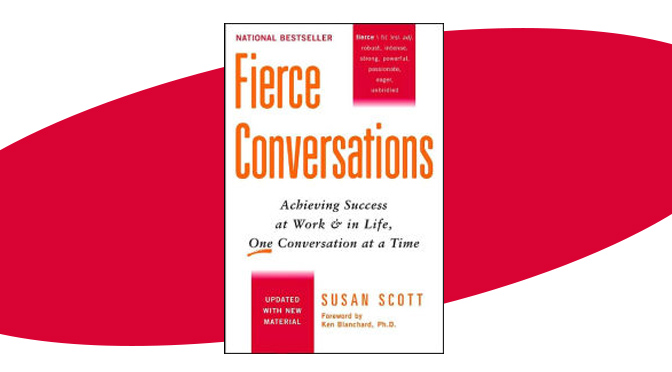You have a problem to manage. It’s time, and you have a tough conversation ahead of you. Egos (and possibly jobs) are at stake. You’d prefer to avoid it all together; however, damage has and continues to occur. Procrastination or hoping things will get better on their own is no longer an option.
You may have inherited a challenging employee through your promotion to a sought-after leadership position, or a new hire isn’t turning out to be as great as you anticipated.
If there’s going to be a change, it’s up to you – and only you – to initiate it. But where to start?
Susan Scott covers a 60-second approach in her insightful book, Fierce Conversations, Achieving Success at Work and in Life, One Conversation at a Time.
I agree with all the suggestions she makes in this book. However, since so many of my clients struggle with this issue of confronting their toughest issues of the day – a problem employee – I wanted to share her approach with you.
I’ll blend her structure with a real-life scenario from one of my clients, names changed.
‘You’ are the new leader. Your part of initiating this conversation will take no longer than 60 seconds by sticking to the script without side discussions or questions. As with any important interaction, practice ahead of time will bring about greater success.
1. Name the issue. “Jack, you’ve worked for three of my predecessors and though they praised you publicly, they overlooked your shortcomings. I believe this was unfair to you. How can you grow and improve if you don’t know what to change?”
2. Describe a specific example. “Specifically, you are not engaged. You come in late, leave early and have a sour attitude which affects others who are otherwise elated with where this team is headed.”
3. Describe your emotions about the issue. “Your lack of engagement makes me sad in that I know you are capable of so much more. You are brilliant, creative, and have so much to offer our team.”
4. Clarify what is at stake. “I don’t want to let you go, with your deep knowledge our firm. However, you are setting a poor example. I need everyone to step up to meet our steep goals. Unless you also step up, you leave me with no choice.”
5. Identify your contribution to this problem. “I take full responsibility for not bringing this to your attention months ago. Had I done so, we’d be in a much better place by now. It wasn’t fair to you or to the team.”
6. Indicate your wish to resolve the issue. “You and I now move forward in one of two directions. My preference is to invite you to become a fully engaged and contributing member of our team. However, the choice is yours.”
7. Invite your partner to respond. “I’ve done enough talking. Now it’s your turn. Share with me your view of this specific situation. What am I not seeing. How do things look through your eyes. What are you willing to do moving forward. Where do we go from here?”
You’ve outlined the situation with grace and honesty. You’ve extended an invitation for the recipient to be heard and to move the conversation forward.
Everyone benefits from the opportunity to express their side of the situation prior to moving to an agreed upon solution.
If they get side tracked, bring them firmly back to the issue at hand.
Healthy relationships include honest conversations, appreciation, and sometimes confrontation.
People need to know where they stand, especially if they sense your dissatisfaction or feel less confident in your presence.
Your honesty and dedication to their improvement is a gift. I challenge you exercise it often.





